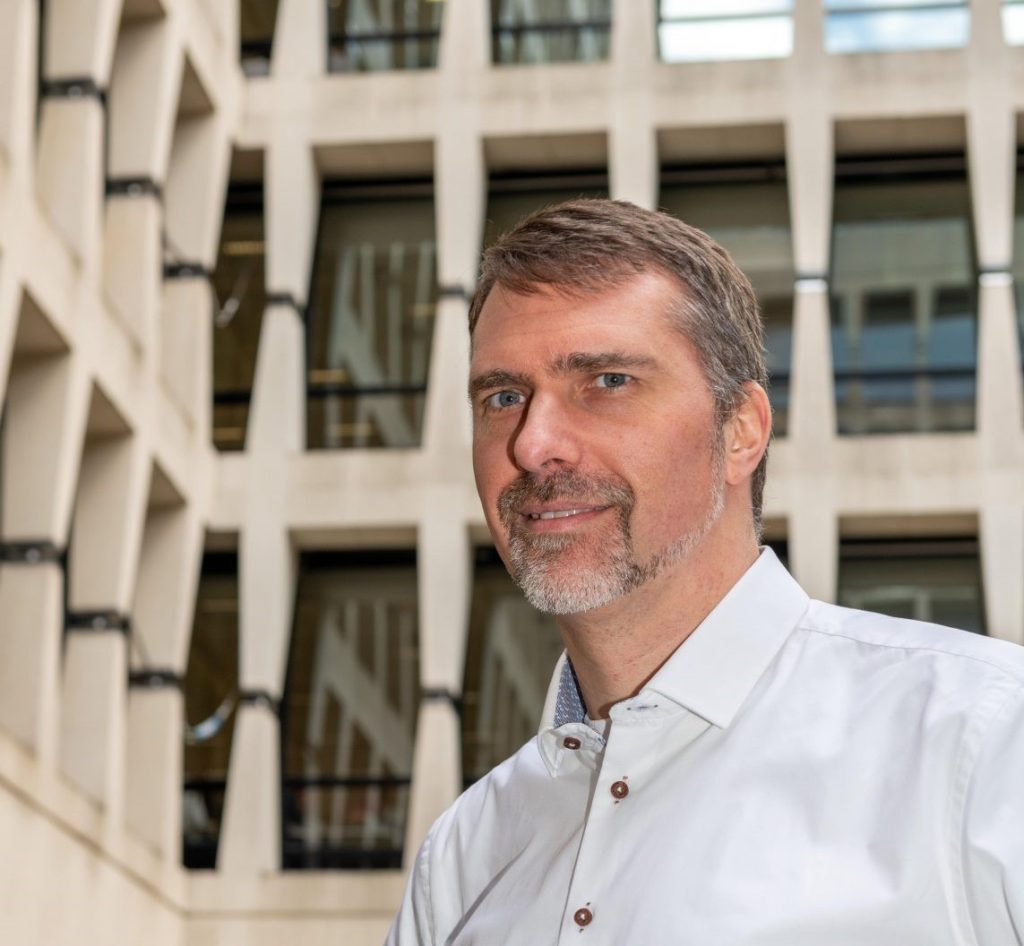ING on digital transformation and the future of talent
Christophe Vanden Eede, ING’s global head of talent management, shares his views on the future of work, and particularly the ‘Great Resignation’, with UNLEASH.
Why You Should Care
ING’s global head of talent management Christophe Vanden Eede will be at UNLEASH and iCIMS' INSPIRE European summit, which is taking place on 21 October.
Ahead of that, UNLEASH caught up with Vanden Eede to discuss ING’s HR priorities.
As well as to talk about how ING is embracing the hybrid future of work, unlike some of its big US banking rivals.
ING is a Dutch multinational banking and financial services firm that employs almost 56,000 employees across 55 countries worldwide.
The person overseeing these workers and prioritizing their learning and development and engagement at work is Christophe Vanden Eede, ING’s global head of talent management.
Vanden Eede has been doing this job since January 2019 when he was headhunted by ING from telecommunications company Telenet. Prior to that, Vanden Eede started his talent-focused HR career at energy giant ENGIE after working in IT project management.

Christophe Vanden Eede, global head of talent management at ING.
Ahead of his appearance at the upcoming UNLEASH/iCIMS INSPIRE European summit on how to attract, retain and engage the workforce in the future of work, ING’s global head of talent management sat down with UNLEASH to discuss the bank’s HR and HR tech priorities, particularly during the pandemic, why hybrid working is the future of work at ING and how it will avoid a mass talent exodus in the ‘Great Resignation’.
Digital transformation at ING
Vanden Eede was attracted to a career at ING because of the company’s purpose – “to empower as much as possible” – and its commitment to being agile and innovative in everything it does.
He likes to be at the “edge of my own field” and ING is in the midst of transforming its business model to become a digital player in the banking sector; this work pre-dates the COVID-19 pandemic.
To achieve this digital transformation, “we need to rethink our HR architecture” by both standardizing and automating processes to make work as efficient as possible for everyone at ING.
Even pre-pandemic, “we’ve been rolling out master systems. We’ve been adding on best of breed systems on top of that in order to make sure that we are able to cater to all the needs that exist,” explains Vanden Eede. Examples of this additional layer of HR tech include learning and development or onboarding systems.
However, there is also a need to think about the HR operating model and making sure everyone across the 55 countries ING operates is working in the same way with the same system.
A central pillar of ING’s ongoing digital transformation is talent and capabilities. “When you’re transforming that much,.. you really need to think through how you are going to source all the different people you need”.
To help with its talent acquisition, ING has been relying on virtual recruitment and onboarding for a few years, which came in very useful when the pandemic hit.
“Video recruitment was something that we already had put in place,” notes Vanden Eede. ING then just quickly made sure the tools that were being tested in certain markets were then quickly rolled out globally.
“We were in the midst of rolling out a global onboarding tool [when the pandemic hit], which is Enboarder” and allows automation of the whole onboarding process.
Similarly, ING’s digital transformation meant it was also very ready to shift to virtual learning during the pandemic; importantly, take up of the digital learning offerings has been very impressive during the pandemic.
Hybrid working is the future
Despite being prepared with tech tools, ING, like all employers, faced some challenges in pivoting to remote working when COVID-19 struck.
For example, ING had to make sure employees had the technology at home to be able to work remotely – like good hardware and access to Microsoft Teams for team collaboration.
Then the bank focused on creating resources that, for instance, helped managers to manage successfully remotely, especially in supporting employees in areas like wellbeing and mental health.
However, rather than focusing on the negatives of COVID-19, Vanden Eede explains that ING sees remote working during the pandemic not “as a problem or a threat, but as an opportunity to look at flexibility and personal effectiveness.”
In fact, he states that “COVID-19 really proves the point that you need to be flexible, you need to be agile, and you need to be able to quickly adapt to any new challenges thrown your way”.
“[At ING] all of us experienced an increase in our effectiveness [during the pandemic]. So how can we keep that moving forward and not fall back into the old pitfalls that we have?” notes Vanden Eede.
To start tackle that those pitfalls, ING has already improved its diversity and inclusion efforts, as well as started to focus more on “output and impact, rather than a presenteeism”.
However, another element of this focus is embracing long-term hybrid working. Although initially 100% of ING’s employees worked from home, slowly some people were pulled back in because of customer needs, and now 85% of workers are remote working.
ING has created a hybrid working framework where, for most employees, they will split their time 50% at home and 50% working at the office once the pandemic ceases.
“It is not that we force everyone to do 50 50”, notes Vanden Eede. They choose somewhere in between 100% either at home or working in the office and “we take into account [people’s] own personal content and the team context”.

ING’s Cedar Office in Amsterdam. Credit: ING Group via Flickr.
Ultimately, for ING, their hybrid framework is “about empowering people to do what is best for them, the team, the organization and the customer”. So Vanden Eede notes that ING’s HR team wants employees to think carefully about “when it is efficient to work from the office and when it is better to work from home” in deciding their own hybrid work plan.
It is interesting how pro-hybrid working ING is given large swathes of the banking sector have very openly expressed their dislike of long-term remote working. Most famously, Goldman Sachs’ CEO David Solomon referred to remote working as an “aberration” and stated that it would not be the new normal at the bank.
Instead, ING is falling more in line with the likes of Standard Chartered who has similarly realized the benefits of hybrid working for the business, so long as the clients’ needs are met.
Talking about other banks rejection of hybrid working, Vanden Eede says: “It is quite difficult to make assumptions about other bank’s culture. Empowerment is in our DNA, [and that is about] making sure that people are allowed to find the best possible way for them to work”.
“We really do believe that hybrid working can bring benefits in employee wellbeing and engagement. Of course, if you have happier employees they will make sure your customers become happy, which… normally translates into happy profit, so it is a win, win, win,” continues Vanden Eede.
Avoiding the ‘Great Resignation’
COVID-19 has done more than just change the location where we all work, it also pushed employees to prioritize their needs and leave jobs that they are not engaged with.
This so-called ‘Great Resignation’ trend is already hitting some industries and is causing labor shortages, particularly in the US, and is a real concern to many employers.
Vanden Eede notes that ING is prepared to see some people leave because of the bank’s digital transformation and change in business model.
But he believes that ING’s purpose is strong: “We are really banking on wellbeing, engagement and keeping our finger on the pulse of how people are feeling”.
With regard to wellbeing, Vanden Eede notes that although ING was ahead of the game with tech tools to support things like recruitment, onboarding and learning, there is still a need to dial up the focus on supporting those who started at ING during the pandemic and are yet to physically meet their teams.
Although wellbeing has long been a focus at ING, the bank is always working to trial new policies to support employees even better. For example, the company is running an unlimited leave pilot in the Netherlands and is considering increasing its parental leave benefits.
As a result, Vanden Eede concludes: “I am pretty sure we will be able to react when we see the signs [of talent leaving] and be able to retain people”, but “we are also able to attract people” around the purpose and mission of the company.
If you want to hear more of Christophe Vanden Eede’s thoughts about the future of talent, register now for your complimentary seat at UNLEASH and iCIMS Inspire HR European Summit on 21 October.
Sign up to the UNLEASH Newsletter
Get the Editor’s picks of the week delivered straight to your inbox!

Chief Reporter
Allie is an award-winning business journalist and can be reached at alexandra@unleash.ai.
